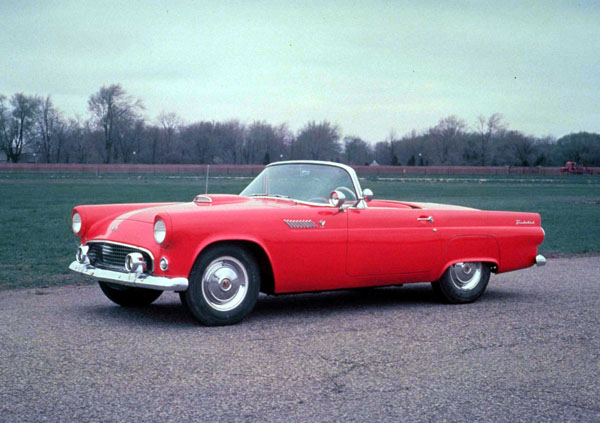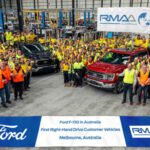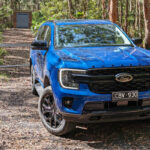Henry Ford’s empire was in decline when the US government shut down car production to concentrate on the war effort in 1942. After the war Henry Ford ll took over the reins and soon after reorganised his company with a solid backbone of former servicemen.
This youthful management rose to the occasion when sales, inevitably, slumped between 1951 and 1952 as the American market for new cars reached saturation point. The only worthwhile trend that had emerged in the 1940s was a predilection by ex-servicemen for more sporting machines, of the type produced in Europe by MG, Jaguar and Porsche.
This desire for cars that were exciting as well as practical had been identified, discussed and mentally assimilated as early as 1951, when General Motors and Ford started working on ‘sporty’ prototypes. It needed only one – General Motors in this case with the Chevrolet Corvette and Cadillac Eldorado – to make the first move, for the other to follow, and Ford came out with its first Thunderbird in 1954, but sold it as a 1955 model. It has been said with some conviction that the best thing about the Ford Thunderbird was its name.
Compared with the Corvette, the Thunderbird was much more attractive. It had an interesting, if conventional two-seater steel body shell with winding windows and an optional hardtop and although it weighed 1285 kg it was the smallest American Ford built for decades. And if that did not say enough about the American car industry at the time, its dramatic lack of technical innovation confirmed it. The Thunderbird had been able to progress from prototype to production in only a few months because it was largely composed of components from other Ford cars.
Fortunately, however, the engine was the best part: a brand-new overhead valve 4.2-litre V8, which produced 120 kW against the 100 kW norm, and was quickly raised to 144 kW for a three-speed manual version and 148 kW for a two-speed automatic, both with gearchange on the steering column. The suspension was the standard wallowing type used on all Ford sedans at that time, but the exhaust note had the familiar burble that only a V8 could produce. In the US customers queued up for the Thunderbird.
Its styling was absolutely American, as a luxurious two-seater coupe it cost twice as much as a regular sedan, and was heavily decorated with chrome. Advanced technology was limited to a tinted perspex panel behind the instrument nacelle which was meant to catch all available light and make the speedometer glow.
As Ford executives secretly planned a longer, lower, wider four-seater Thunderbird as big as their sedans and commanding the same sort of purchase price, they used the ’56 model as an experiment to see if they could sell safety. It had a brand new deep-dish steering wheel, padded dashboard and optional seat belts, as well as dual exhaust pipes routed through the over riders. The safety aspects fell flat in the market place, but the American public loved the exhaust pipes, which reminded them of a Porsche and they became the height of fashion. No matter that Porsche had been forced into this emergency measure by a notable lack of ground clearance!
All the 1956 model year T-birds had a continental’ spare wheel kit – meaning that the spare wheel was mounted behind the rear bodywork – with the excuse that it liberated more space in an already vast luggage boot. The fact that its overhanging weight made handling an even more difficult exercise than that of a Porsche seemed to be of no concern. The Thunderbird was a safe car with its new steering wheel and the portholes in the hardtop, claimed to improve visibility through the blind sides of its hardtop, were an option.
There were tail fins for 1957, but that was the last year for the two-seater Thunderbirds, and in 1958 a completely different, longer, heavier, four-seater car was marketed with the only sporty thing about it being the 224 kW engine.












